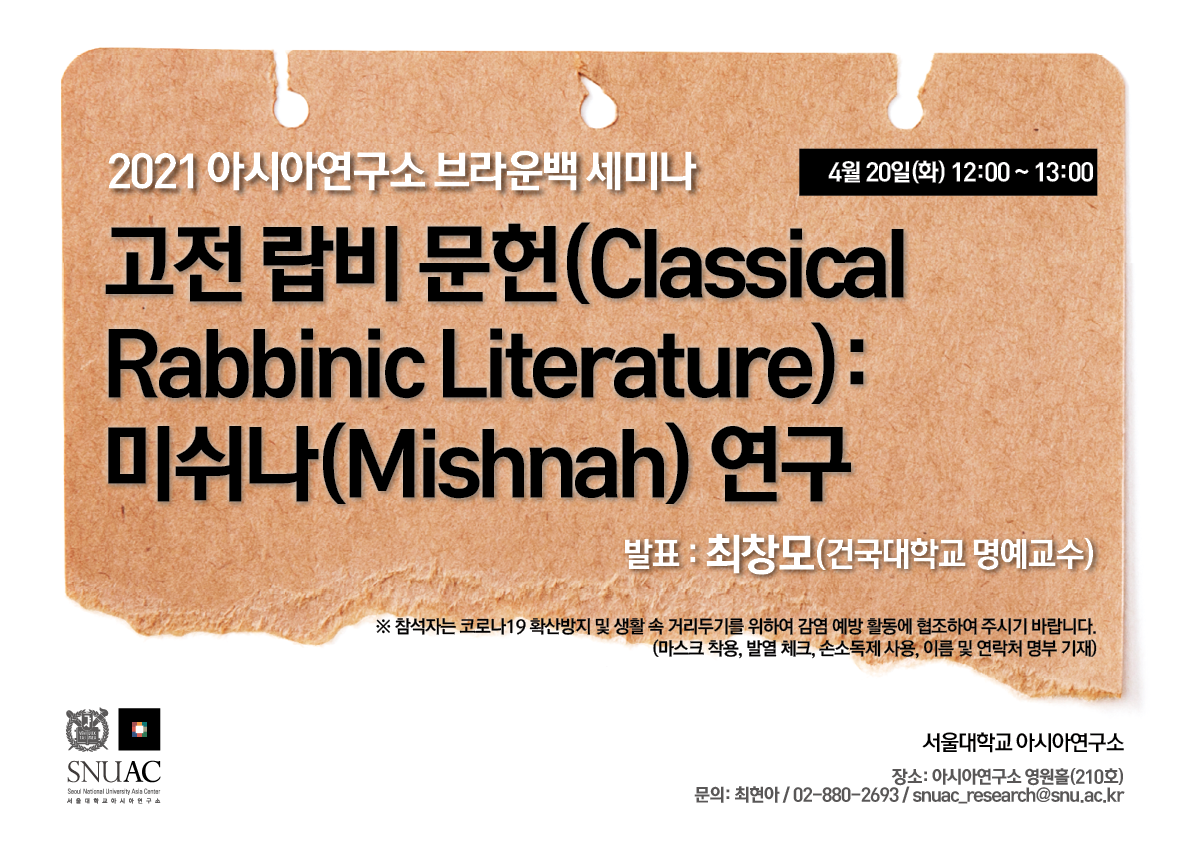The Classical Rabbinic Literature : The Mishnah Studies

- Date: April 20th, Tuesday, 2021 12:00 – 13:00
- Location: Youngone Hall (Room 210), SNUAC (Bldg. 101)
Speaker: Changmo Choi (Konkuk University Emeritus Professor)
In classical studies, Hebrew-Jewish studies have stood as an axis along with ancient Hellenism and Latin studies. Yet, the foundation for Hebrew-Jewish studies in Korean society is humble. The only Department of Hebrew Studies in Asia was established at Konkuk Univ. in 1991 but abolished in 2008 due to restructuring, thus only a few are continuing academic activities in the area under the umbrella of Middle Eastern & Islamic studies. Also, books on the market related to the topic are mostly oriented toward the public, lacking any basic exploration of the original texts. The range of Hebrew-Jewish studies as classical studies includes the Hebrew Bible as well as classical Rabbinic literature. While the Hebrew Bible is a text that was written from around the 10th to 3rd century BC, Rabbinic literature mostly refers to Mishnah and Talmud that were written in the 3rd century AD. Especially, Mishnah, which is the basis of Talmud, refers to the literature in the Jewish-Rabbinic tradition that was edited and collected by the Rabbi Judah ha-Nasi in the early 3rd century AD. Mishnah is basically the oral Torah that supplements and complements the religious principles of the Torah and is the matrix of Talmud. Mishnah consists of six orders (sedarim). Zeraim, the first order, deals with agricultural laws, including the tithe. Moed, the second order, deals with various religious seasons of Judaism, especially the laws of the Sabbath. The third order, Nashim, deals with family laws, mentioning marriage and divorce. The fourth order, Nezikin, deals with civil and criminal law, discussing how the court should function. The fifth order, Kodashim, deals with ‘holiness’, discussing sacrificial rites and dietary laws. The sixth order, Tohorot, contains laws of purity, discussing in detail purity, impurity, various diseases, women’s menstruation, and how to cleanse the impure.
